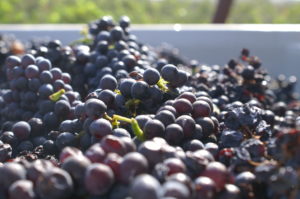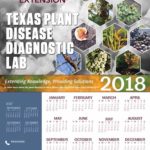 Black rot of grapes
Black rot of grapes
SCIENTIFIC NAME of causal agent: Guignardia bidwellii
DISEASE DESCRIPTION
SYMPTOMS:
The signature symptoms of black rot are small, reddish-brown circular lesions on infected leaves. Tiny black dots are visible in the center of the lesion. These dots are spherical fruiting bodies called pycnidia where spores for further dispersal are produced. Older lesions have margins with a black line while the inner area of the spot is tan. Elongated black lesions on the petioles of affected leaves result in wilt. Cane infections result in black lesions, weakening the stem.
Fruit infection is the most damaging stage, resulting in small, light-colored lesions with black borders. Darkening regions of fruit develop masses of black pycnidia on the surface. Infected berries shrivel and turn into hard black bodies called mummies.
BIOLOGY:
After mummies fall to the ground, the pathogen is able to overwinter in the dead fruit. The fungus can also survive in cane infections on the vine. Survival can extend for at least 2 years within lesions on the infected shoots retained as canes or spurs. Ascospores, the spore stage dispersed in the late winter and spring, can be disseminated from the mummies to spread the disease. Another spore stage, called conidia, are spread from the pycnidia over short distances by splashing rain or water.
MANAGEMENT METHODS:
Practices to control black rot with cultural methods include managing vineyards to optimally grow healthy grape crops. For example, choosing the correct cultivar for a growing region is recommended, as well as considering which cultivars are more susceptible to the pathogen. Proper orientation and pruning of the grape vines is essential to optimize light and aeration, as well as keeping vines off the ground. Sanitiation to removal weeds, infected plant parts and mummies in currently infected fields will assist in reducing the impact. Chemical control includes the use of fungicides at optimal disease development stages for the specific fungicide use. Specific fungicides and their proper use can be found in the links below.
RESOURCE LINKS:
https://plantdiseasehandbook.tamu.edu/food-crops/fruit-crops/grape/
A plant disease encyclopedia of Texas pathogens affecting food crops, including grapes.
A resource detailing the signs and symptoms of black rot of grapes, including descriptive pictures of the pathogen on grape plants and fruit.
https://aggie-horticulture.tamu.edu/archives/parsons/fruit/grape.html
A Q & A page of grape growing issues and solutions including the infection of grapes by black rot,
https://oaktrust.library.tamu.edu/handle/1969.1/2866
An electronic scan of the handbook Black Rot of the Grape, Life History and Treatment, issues by Texas A&M University in 1892 by the Texas Agricultural Experiment Station in Bryan, Texas.
This factsheet is authored by April DeMell (Masters student)

Dr. Appel’s 2017 Fall PLPA601 students
Factsheet information for the plant health issues represented by the images on the 2018 TPDDL calendar were written by graduate students enrolled in the Department of Plant Pathology & Microbiology PLPA601 Introductory Plant Pathology course in the 2017 Fall semester (course instructor: Dr. David Appel). This exercise provides an opportunity for a high impact learning activity where the students are tasked with producing an informational output directed to the general public and to provide opportunity for the students to write.
